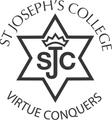ENGLISH LEARNING AREA

During Term 1, students across all year levels have enjoyed expressing themselves through writing, analysing storytelling techniques, and preparing their own individual responses to film and literary works.
YEAR 7
Students commenced the year with an induction to the college which culminated with student-created PowerPoint presentations to parents based on the history of the college and our Core Values.
The remainder of the term has been spent establishing and consolidating literacy skills through weekly spelling, reading, and grammar activities. Each class has also undertaken a novel or short story to study. Student literacy skills, spelling, and grammar are the focus of Term 1. Throughout the year, we retain a structured approach to language skills by devoting three of the students’ five lessons per week to reading, spelling, and increasingly complex grammar tasks. This structure is specifically intended to improve student comprehension and writing.
YEAR 8
Students started the year with an introduction to narrative writing and activities specifically devoted to all elements of narrative structure.
Our young writers have learnt elements of the narrative form and have experimented with creating narratives of their own. Weekly classes have also been structured so as to improve literacy via language comprehension and writing practice. Most weeks students spend three out of five classes practicing spelling, reading, and grammar skills. This structure is continued from Year 7 and is specifically intended to improve student comprehension and writing.
YEAR 9
Students are specifically learning how to respond critically to text via an analysis of an adaptation of Stephen King’s The Body. This story is a coming-of-age tale about a group of boys who go on an adventure together and was adapted into the film Stand By Me in 1986. Through the lens of the story, students are able to compare social and cultural elements from their lives with the social expectations of the 1950s. Further, students are carefully learning all elements of a text response in order to prepare them for the most important element of their VCE studies: Essay Composition.
YEAR 10
Kate Grenville’s The Secret River introduces students to the cultural significance of lesser known elements of Australian Indigenous history via a close film study of a fictionalised version of the Hawkesbury Massacre. Students have responded critically and creatively to the film. They were invited to further research the legacy white colonisation has left on Indigenous Australia and the ongoing importance of this on the whole of Australian society. Students explicitly studied filming technique and provided an explanation of their own authorial choices in their creative response. Both skills directly inform their ability to respond accurately to the same types of tasks in VCE English.
YEARS 11 AND 12
Students in both year levels are undertaking text response. Year 11 students are about to write an analytical response to the WWI poetry of Siegfried Sassoon and Wilfred Owen. They have learnt advanced poetic analysis techniques very carefully and are about to apply this to their first essay response of the year. This task is designed to emulate their Year 12 SAC experience realistically in a way which provides students with usable feedback that they can employ in their own improvement strategy for the year.
Year 12 students are about to respond to Tessa Hadley’s anthology, Bad Dreams. They have responded critically and creatively to all elements of their selected stories whilst focusing on refining their essay writing technique.
Parents of all students are encouraged to actively participate in their children’s reading by modelling reading practice at home and by taking an interest in what their children are reading. Reading for pleasure is a vital element in improving literacy. When children see their family reading, they are more likely to develop a lifelong love of reading. Consistency is the key. Novels, high quality sport publications, biographies, news publications, or any other source of printed reading material is a great way to get reluctant readers into the habit of reading daily.
Ms Joelene Cappola
English Learning Area Facilitator
